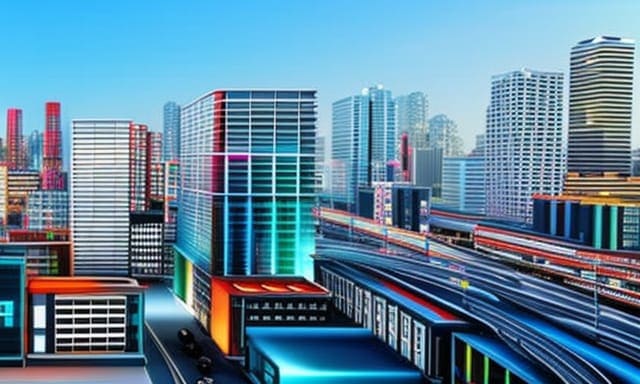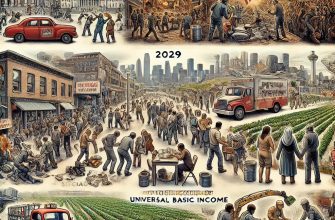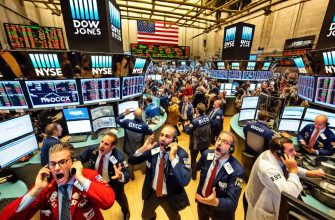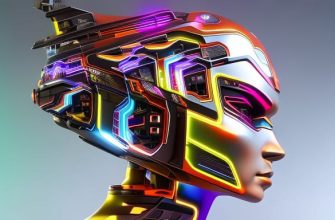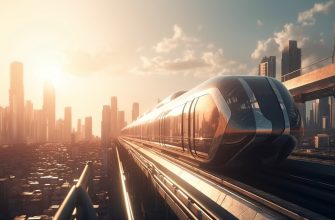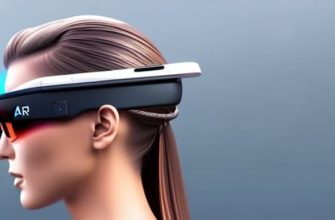Introduction to AI-driven Smart Cities
Imagine a city where traffic flows smoothly, energy is managed efficiently, and public services are tailored to your needs. This futuristic vision is becoming a reality thanks to the rise of AI-driven smart cities.
This article will explore how artificial intelligence (AI) transforms urban environments by optimizing traffic control, energy management, and public services. We’ll also discuss the challenges and considerations for implementing these advanced technologies in our cities.
AI-driven smart cities leverage data and advanced algorithms to make urban life more efficient, sustainable, and enjoyable. By connecting and analyzing data from various sources, these cities can optimize operations, predict problems, and adapt to the ever-changing needs of their citizens.
AI in Traffic Control and Transportation
Intelligent Traffic Management
AI-driven traffic management systems use real-time data to optimize traffic flow, reducing congestion and improving overall transportation efficiency. By analyzing traffic patterns and predicting demand, these systems can adjust traffic signals, reroute traffic, and provide real-time information to drivers.
Autonomous Vehicles and Public Transit
Autonomous vehicles and AI-enhanced public transit systems promise to revolutionize urban transportation. With the ability to communicate with each other and the city’s infrastructure, these vehicles can optimize routes, reduce accidents, and improve overall mobility.
AI in Energy Management and Sustainability
Smart Grids and Energy Distribution
AI-driven smart grids enable more efficient energy distribution and consumption by analyzing and responding to real-time data. These systems can predict energy demand, optimize the use of renewable resources, and detect inefficiencies or faults in the grid, ensuring a more sustainable and reliable energy supply.
Building Automation and Energy Efficiency
AI-powered building automation systems can monitor and control various aspects of a building’s performance, such as heating, cooling, and lighting. By analyzing data and learning from occupants’ behaviors, these systems can optimize energy usage and reduce the overall carbon footprint of urban environments.
AI in Public Services and Safety
Personalized Services and Citizen Engagement
AI-driven smart cities can offer personalized services and better engage with their citizens. By analyzing data from various sources, such as social media and mobile apps, cities can understand the needs and preferences of their residents, enabling more responsive and effective governance.
Public Safety and Emergency Response
AI technologies can improve public safety and emergency response in smart cities. By analyzing data from cameras, sensors, and other sources, AI-driven systems can detect and predict safety hazards, crime patterns, and natural disasters, allowing faster and more effective responses.
Challenges and Considerations for Implementing AI-driven Smart Cities
Data Privacy and Security
As AI-driven smart cities rely heavily on data, ensuring the privacy and security of this information is crucial. Implementing robust data protection measures and transparent data handling practices can help address these concerns.
Technological Infrastructure and Investment
Developing and maintaining the technological infrastructure required for AI-driven smart cities can be costly and complex. Adequate investment and planning are necessary to build and maintain the necessary networks, sensors, and systems, ensuring that the benefits of smart cities are accessible to all residents.
Social and Ethical Considerations
AI-driven smart cities must also address social and ethical considerations, such as potential job displacement and the digital divide. Ensuring that these technologies are inclusive and serve the needs of all citizens is essential to prevent exacerbating existing inequalities.
AI in Environmental Monitoring and Urban Planning
Real-time Environmental Monitoring
In real-time, AI-driven smart cities can use environmental sensors and advanced algorithms to monitor air quality, noise pollution, and other environmental factors. This information can help city planners and policymakers make informed decisions to improve the urban environment and overall quality of life for residents.
Data-driven Urban Planning
AI technologies can assist urban planners in making more informed decisions about the development and growth of cities. AI can help identify optimal locations for new infrastructure, green spaces, and other essential elements of a thriving city by analyzing population trends, land use, and transportation patterns.
AI for Smart Waste Management and Recycling
Intelligent Waste Collection
AI-driven smart cities can optimize waste collection by monitoring waste levels in real time and using data to plan collection routes more efficiently. This can reduce the number of garbage trucks on the streets, lower fuel consumption, and minimize the environmental impact of waste collection.
Automated Recycling and Waste Sorting
AI can play a significant role in improving recycling efforts in smart cities. Using advanced algorithms and computer vision technologies, AI-driven systems can automatically sort and separate waste materials, increasing recycling rates and reducing waste sent to landfills.
FAQ
What is an AI-driven smart city?
How can AI improve traffic control and transportation in smart cities?
What are the benefits of AI in energy management and sustainability?
How can AI improve public services and safety in smart cities?
What are the challenges and considerations for implementing AI-driven smart cities?
- https://technologymagazine.com/ai-and-machine-learning/ai-and-iot-help-bring-about-a-smart-city-experience
- https://www.cameralyze.co/blog/smart-cities-how-does-ai-make-cities-smarter
- https://www.deloitte.com/global/en/Industries/government-public/perspectives/urban-future-with-a-purpose/city-operations-throuh-ai.html
- https://www.sciencedirect.com/science/article/pii/S2667096822000192
- https://aimagazine.com/top10/10-ways-ai-can-be-used-smart-cities
